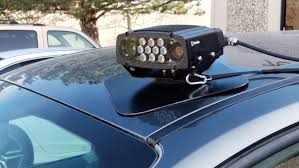Uninsured Vehicle Enforcement Diversion Program in Ponca City
Mike Seals - March 18, 2021 10:36 am

A message from Ponca City Police Chief Don Bohon:
It has recently come to our attention that some citizens are receiving mailed notices from the Oklahoma Uninsured Vehicle Enforcement Diversion Program, based on a license plate reader that was put up in Ponca City in the past few weeks. We were made aware of this information through a Facebook post about one of the notices a citizen received in the mail. Some have had questions about the notices, and at least one citizen has contacted the City Court about the notice. The information below is from a 2018 press release explaining the program. If you receive a notice from the Oklahoma UVED Program, please respond promptly to the notice, following the instructions you are given. Ponca City Municipal Court is not involved and will not be able to assist you.
As the release below explains, the cost of uninsured motorists is great, and in so many ways that cost is passed on to Law Abiding Oklahomans who follow the rules, and carry the required insurance. Ponca City Police Officers write citations for Violation of the Compulsory Insurance law, and may also tow your uninsured vehicle. Driving an uninsured vehicle may also result in your license being suspended.
UVED Press Release
For Immediate Release
Oklahoma City – The state of Oklahoma is fighting back against uninsured vehicles on its roads. The District Attorneys’ Council is planning to launch The Uninsured Vehicle Enforcement Diversion Program or UVED on November 1st, the first of its kind in the country. UVED will use “Automatic License Plate Readers” (ALPR), which will canvass Oklahoma roadways to capture and identify license plates of uninsured vehicles.
The program will utilize fixed and mobile cameras that scan license plates. If a camera detects a vehicle without insurance, the owner will receive a “Notice to Respond” with a $174 fee. State lawmakers passed legislation in November 2017 to implement this new program, which will be administered by the Oklahoma District Attorneys’ Council (DAC).
“The goal of this new program is for all drivers to have at least the minimum required amount of liability insurance. When an uninsured motorist causes a crash, innocent motorists are often forced to pay for repair bills, property damage and hospital bills. The new UVED program will help change that, and we believe it will also create safer roads for all drivers in Oklahoma,” explained Brian Hermanson, District Attorney for Kay and Noble Counties and Chairperson of the Oklahoma DAC.
The DAC and state lawmakers created UVED in 2016, after statistics showed one out of four drivers in Oklahoma did not have insurance. At that time, Oklahoma was ranked number one in the nation for uninsured motorists. This cost the state nearly $9 million in lost revenue from taxes on insurance premiums, not to mention the enormous costs surrounding medical bills and property damage passed on to insured drivers through premium hikes. Oklahoma law requires all drivers to carry at least 25/50/25 liability coverage.
The state will not have to pay any upfront fees for the UVED program. The DAC is working with an outside vendor that will provide all equipment and technology needed to launch the UVED program. The vendor will receive a portion of the fee collected by uninsured motorists.
HOW IT WORKS
When the program launches November 1, 2018, the state will place cameras in high traffic areas in Tulsa and Oklahoma City, before quickly expanding into other parts of the state. The cameras will scan license plates and match them against a statewide database of insured vehicles.
If a vehicle owner has insurance, the UVED program will not keep the license plate information in its system. If that owner does not have insurance, they will receive the Notice to Respond in the mail, which carries a $174 fee. If the driver pays the fee and keeps auto insurance for a calendar year, then the description of “driving without insurance” will be removed from the driver’s record. If the system catches the driver again, the local district attorney’s office will determine the next steps.



